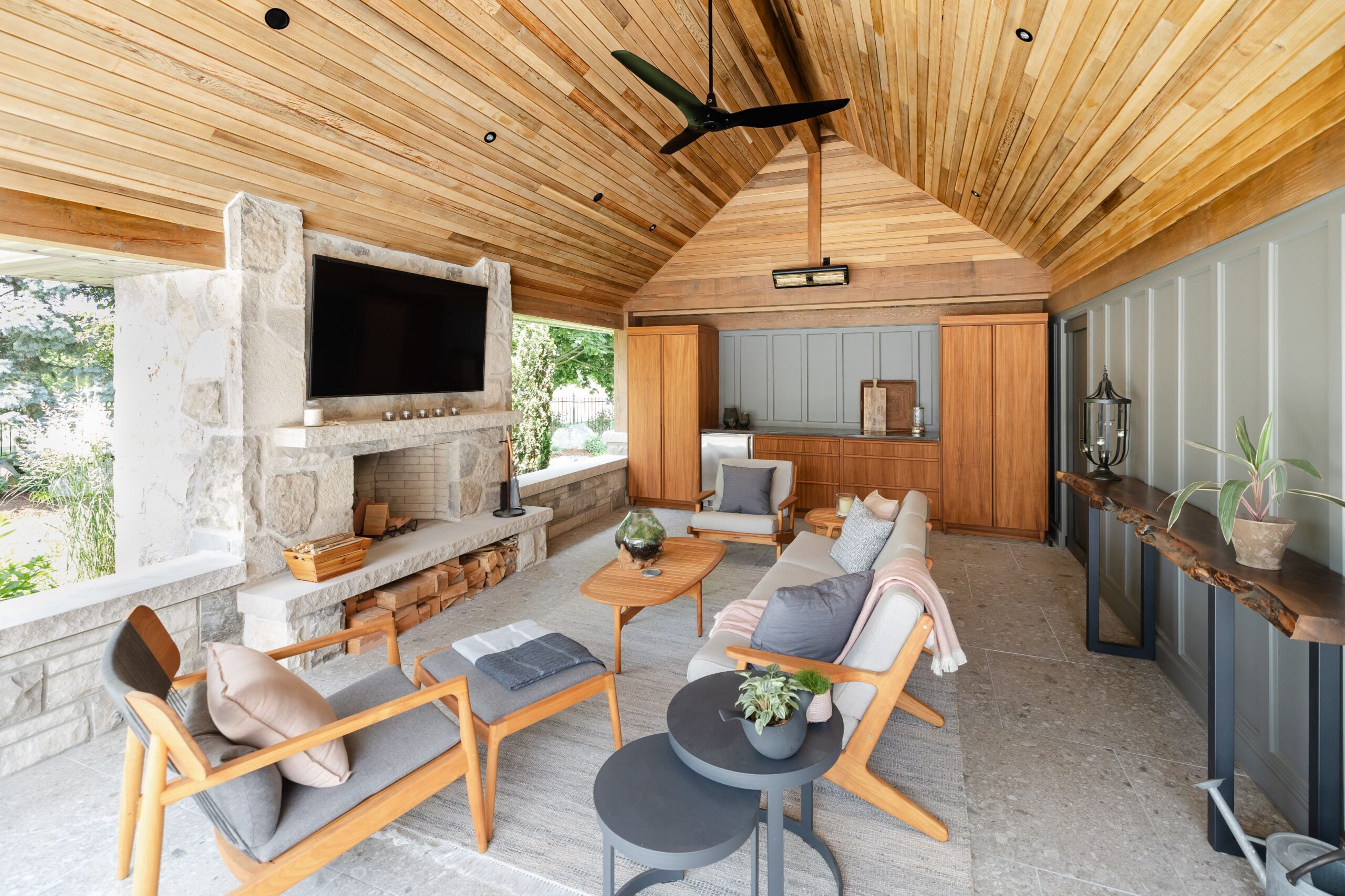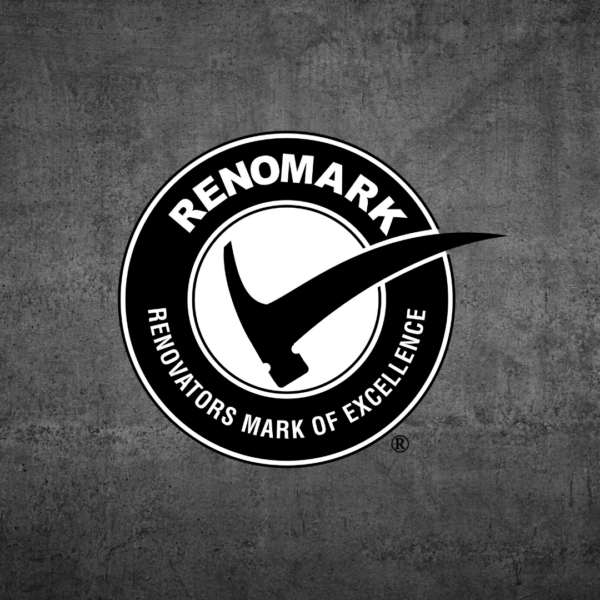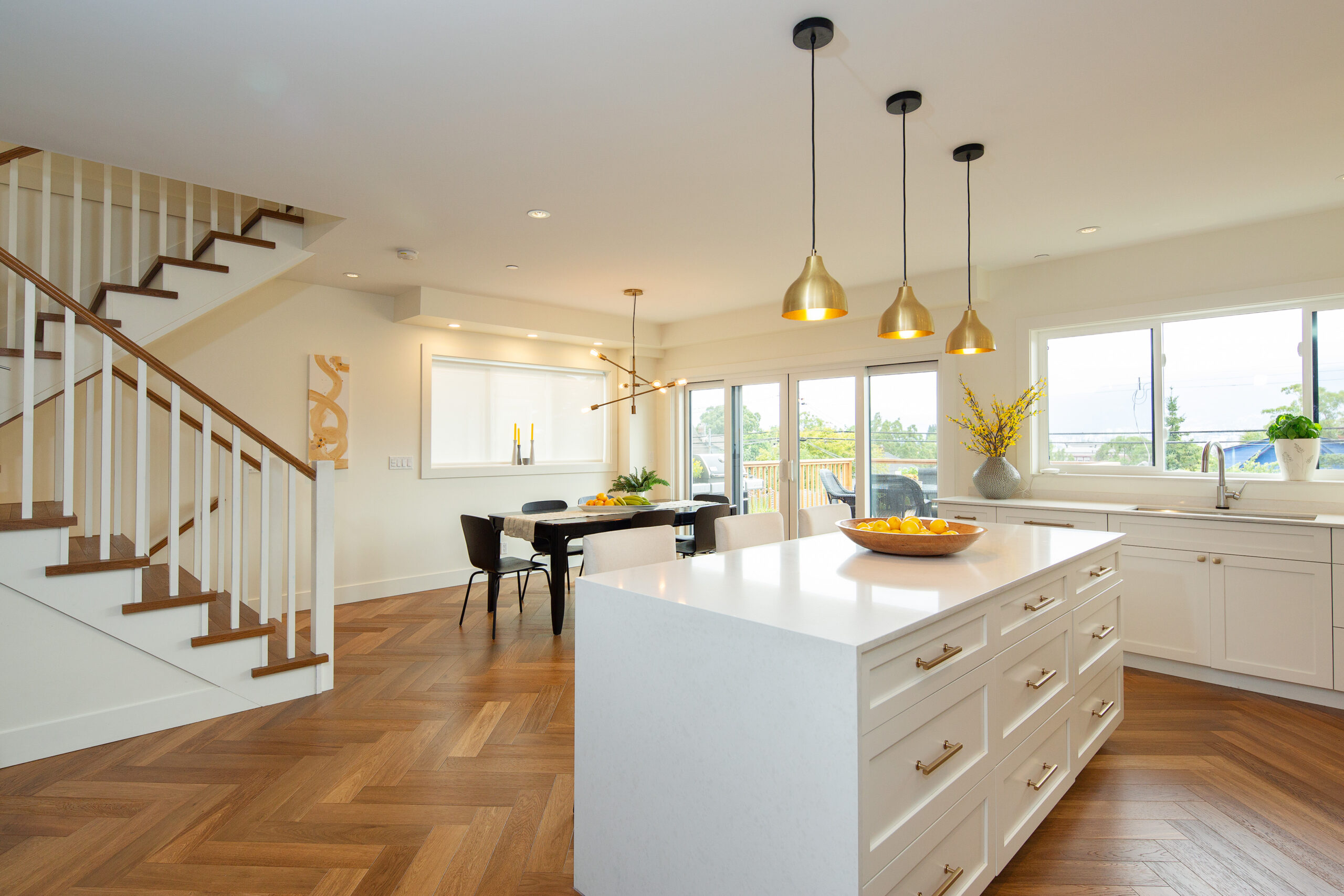
Feature photo (above): Saint Construction Management, Vancouver, British Columbia
Your kitchen has a tough job to do withstanding spills, catching food, and enduring sliding chairs and dropped plates. Whatever you’re dishing up, make sure your kitchen floor can take it! Here are some pros and cons of the top five most popular flooring materials for this high-traffic room.
1. Ceramics, porcelain and stone tiles
Ceramics are a favourite for kitchens because they’re tough, easy to clean, long-wearing, and can incorporate in-floor heating. Natural stone tiles are tough and beautiful too, but not all stone resists staining as well as ceramics and porcelain. If you choose one of these materials, your contractor should install an uncoupling membrane underneath any kind of rigid tiles to prevent cracking. If the tile and grout is unglazed, it should be sealed to keep out stains and dirt.
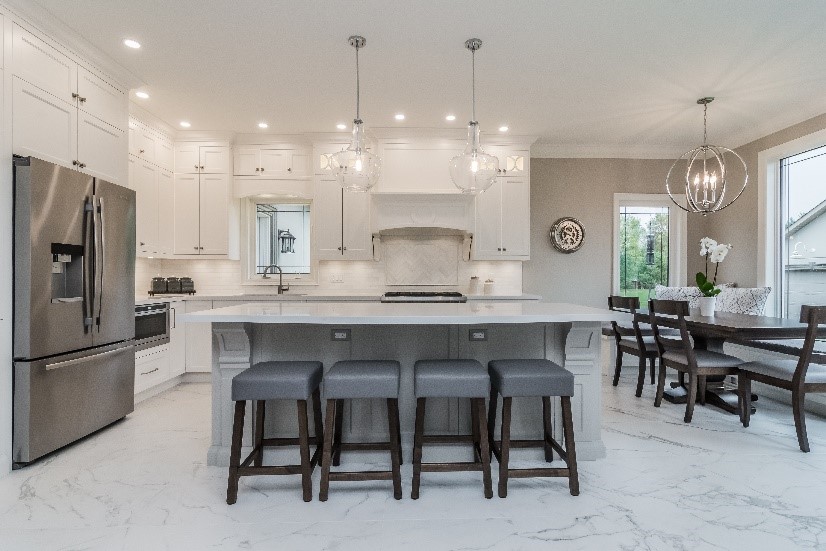
24 x 24 porcelain tiles | Kitchen by Paradisaic Building Group | Oshawa, Ontario
2. Cork flooring
This is a dream to walk on because cork flooring offers cushioning. Commonly available as click together tiles, most cork flooring comes factory finished and ready to install. Think laminate, except softer. Its natural resistance to mold and mildew and anti-microbial factors make it a great choice to stand up to the messy kitchen. Just be sure to seal cork flooring after installation to avoid water damage. It’s also a great choice if you’re looking for a sustainable, eco-friendly option.
3. Hardwood flooring
A lighter duty choice than others on this list, hardwood will do well if you install protective felt disks on chair and table legs. Want a dark floor? Naturally lighter woods (like oak and maple) can be stained to suit, but scratches and wear may eventually show through. Instead, make your kitchen floor DIY-repairable using darker woods such as cherry or alder. Apply polymerized tung oil and the floor finish can be repaired without sanding. Or, install hardwood with a wire brushed finish that will wear well with time (and the inevitability of pots and pans being dropped on it!).
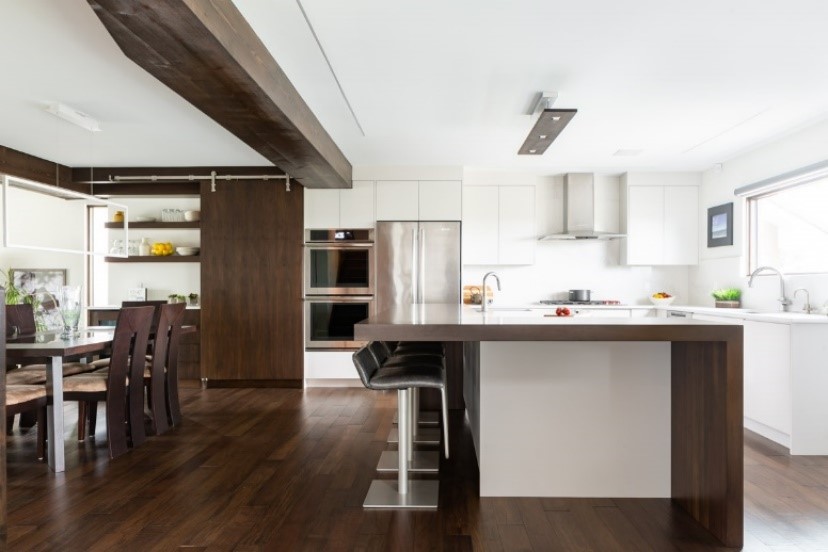
Hardwood flooring | Kitchen by Dependable Renovations | Calgary, Alberta
4. Resilient flooring
This is a catch-all term that refers to any of the one-piece roll floorings that are cut to fit from wall to wall. Some of the best resilients lay flat on their own with no need to glue them down. Vinyl, linoleum and fibre resilient floors all offer very good water resistance and can help reduce sound transmission through the house. Just know that materials like rolled vinyl are often softer and can be susceptible to damage by sharp objects, yellowing over time or fading with direct sun exposure.
5. Laminate flooring
Not all laminates are tough enough for kitchens, so consider products with an abrasion class rating of three or higher. Lighter colours hide dirt and footprints much better than darker laminates. A hardworking choice, laminate can mimic the look of real hardwood or stone tiling without the added maintenance of the natural materials. They’re also often easy to install and easy to clean.
Still not sure what flooring’s best for your kitchen? Ask a RenoMark renovator to come by to discuss the right option for your home!

